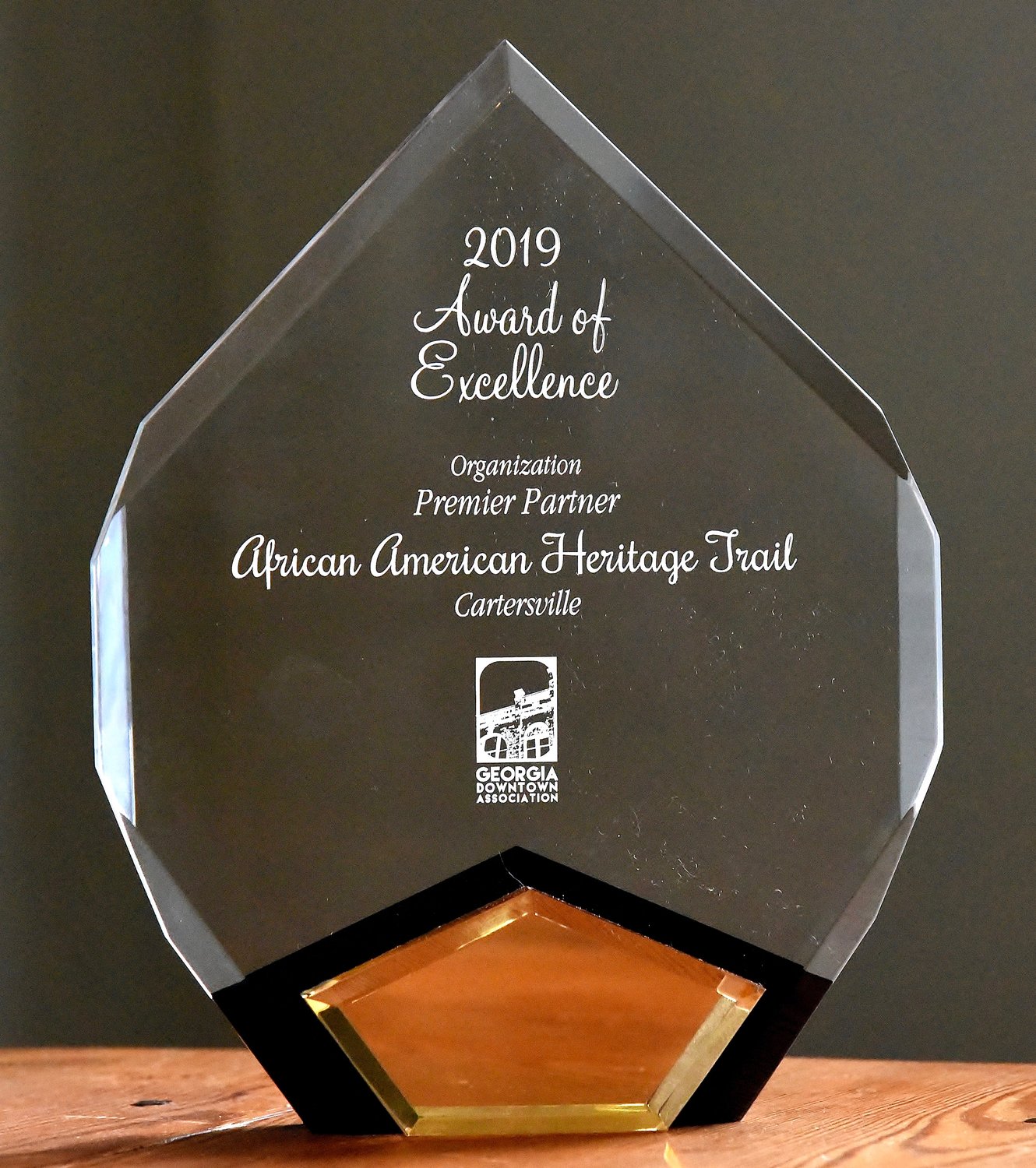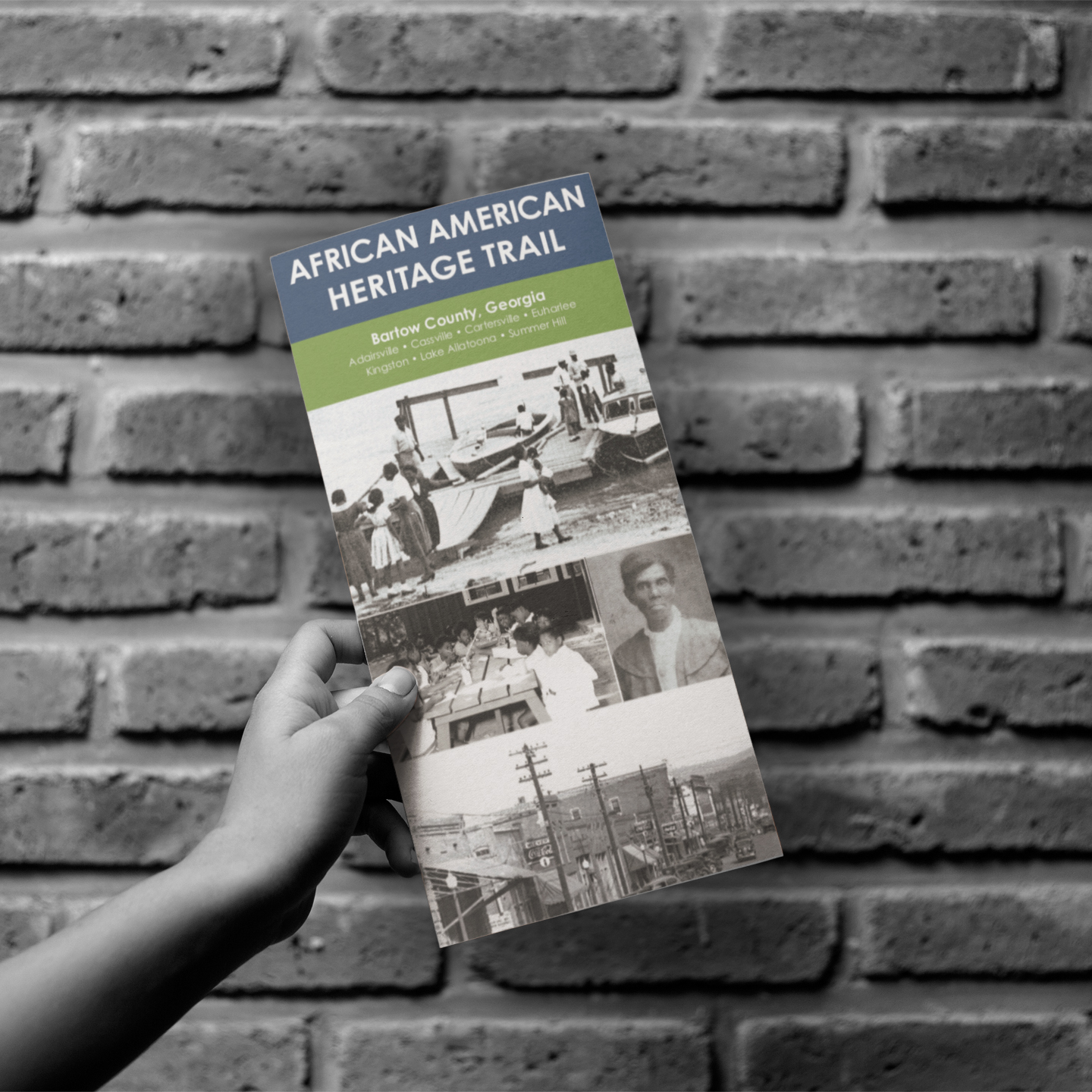African-American Heritage Trail wins Award of Excellence
Article by MARIE NESMITH, Daily Tribune News
Highlighting the project’s collaborative nature, Bartow’s African-American Heritage Trail captured the 2019 Award of Excellence from the Georgia Downtown Association.
“I was absolutely thrilled to hear that the African-American Heritage Trail was going to win an award from the GDA,” said Lillie Read, director of the Cartersville Downtown Development Authority. “These are competitive awards, so our nomination was considered against other projects from around the state, and it felt wonderful to have all the hard work that was put into this project recognized at the state level.
“I am grateful to have been involved in this project, and I am so appreciative of all of the partners who helped make it happen. In addition to adding new facets to the history of Cartersville and Bartow County, this project also underscores the fact that this community was built on diversity and that work and contributions of people of all colors, and from all walks of life, are what has made Cartersville and Bartow County into the place that it is today.”
The Award of Excellence was presented during the 2019 Georgia Downtown Conference at Jekyll Island this summer.
“The award was, truly, for our collaboration with all of the partners involved in creating the Bartow County African-American Heritage Trail,” Read said. “The idea is to recognize the efforts of downtown in conjunction with other community members working to create something that improves the downtown district/community.
“… This award was given as a representation of ‘organization,’ which is one of the areas of focus within the 4-Point Approach, and the purpose of that area of focus revolves around how downtowns work with their community on grassroots initiatives and the reciprocal relationship building that takes place as a result of that work. The context and importance of the work to the community is also factored into consideration.”
Currently promoted as a combined project in one brochure, the components started as two separate initiatives.
“The grant project was a walking tour of African-American history in downtown Cartersville from 1870-1940,” Read said, referring to the Georgia Humanities $2,000 grant that was awarded in 2017. “As the research was being done and the walking tour developed for downtown, our committee started talking with [Cartersville-Bartow County Convention & Visitors Bureau Executive Director] Ellen Archer about the larger county heritage trail that was being developed, and we agreed that the two products would be stronger if we combined them into one single offering.
“Part of the grant award was that our downtown tour would be hosted online, for free and in perpetuity, by the Emory University Center for Digital Scholarship. After the two projects were merged, the Center for Digital Scholarship readily agreed to host the entire county heritage trail as well.”
Along with various locations in downtown Cartersville, such as Gassett’s Grocery and Conyer’s Alley, Bartow’s African-American Heritage Trail consists of 10 sites across the county: George Washington Carver Park and Camp Pine Acres in Acworth; Summer Hill Heritage Foundation and the Masonic Lodge in Cartersville; Euharlee Covered Bridge and Black Pioneers Cemetery in Euharlee; St. James AME Church and Noble Hill-Wheeler Memorial Center in Cassville; Melvinia “Mattie” Shields McGruder’s gravesite in Kingston; and Adairsville Depot Museum in Adairsville.
Produced by the Cartersville-Bartow County CVB, the “African-American Heritage Trail” brochure is available at each trail site, the Euharlee Welcome Center & History Museum and the welcome centers inside the Adairsville and Cartersville depots and Clarence Brown Conference Center.
“Once we got the downtown walking tour piece, we connected it to the 10 driving tour sites suggested by Justice [Robert] Benham as worthy of historic preservation, African-American education and local tourism efforts,” said Keep Bartow Beautiful Executive Director Sheri Henshaw. “This became part of a larger economic development project I oversee, out of Bartow’s Community Development Office, working with Ellen Archer and staff of the local tourism office, as well as stakeholders for each of the 10 identified sites of significance.
“By then, all the people involved had become a close-knit team, and we reasoned, ‘Why make two separate brochures, when this was a great opportunity to pull all these together and double our impact?’ Thanks to Lara Jeanneret of Lara J Designs, and her team, it became the award-winner you see today.”
When she started working on the African-American Heritage Trail in 2014, Henshaw noted “important African-American historical sites were disappearing, falling victim to urban renewal, redevelopment and zoning” across the nation.
“Justice Benham, an avid historian who helped save Noble Hill Wheeler School and Summer Hill School, wanted to preserve and interpret these spaces, for youth and adult tour groups and locals alike, and to incentivize them for job creation, especially for people of color,” Henshaw said. “These sites tell the story of the African-American journey in America, from the perspective of one county in Georgia, from 1850-1970, from enslaved to emancipated, from forced labor to wage earner, from illiterate to educated.
“By preserving, when possible, and interpreting, through education, tours, brochures, signage, 100 years of great change, from a variety of sites, we could really make an impact much greater than through just one site alone. In addition to preservation, the goal was to interpret these sites, promote additional research, share the history for public view, create jobs and new income streams for the African-American community, and foster understanding, goodwill and healing within Bartow’s diverse communities.”
Receiving favorable feedback from tour visitors, Henshaw shared some of the sites currently are receiving improvements.
“We have already hosted a number of tours from metro Atlanta, and tour groups love it,” she said. “There is really something for everyone, and tours can come back again and again, and take in different sites they missed previously. The sites visited get the positive feedback, and the revenues, which is how we planned it. I want the sites themselves to benefit from this, both financially, through increased tourism revenues, but also in recognition and appreciation of the places they have struggled to save and protect.
“We are in the midst of work on several projects that will enhance the sites, and the visitor experience, even more. We hope that leads to more positive word-of-mouth, and more tours. I want to thank Lillie Read for her leadership, her willingness to take on this project, and for allowing the two trails to become one.”















